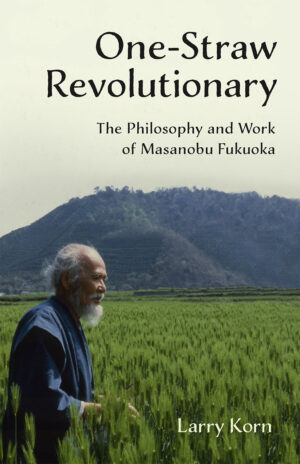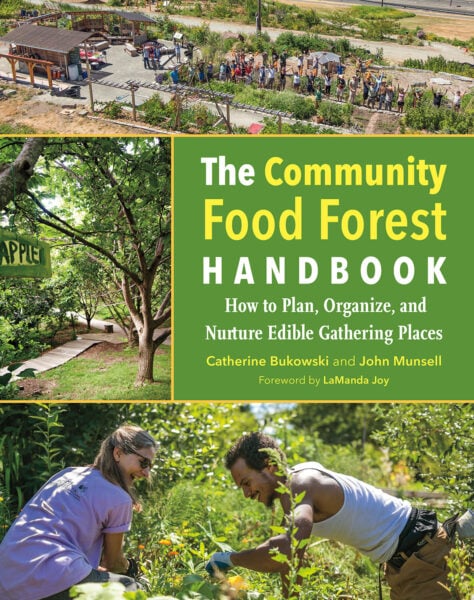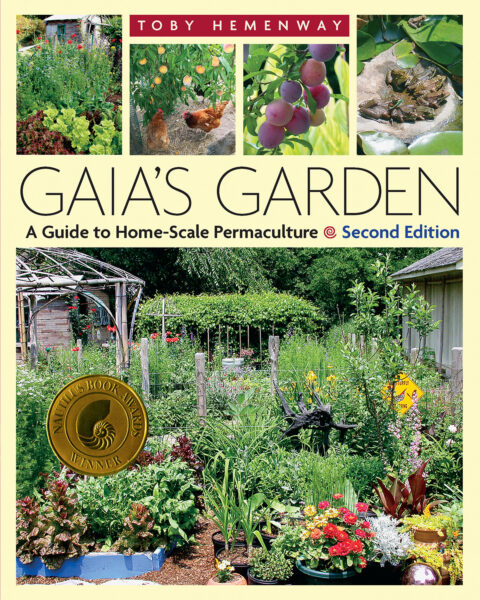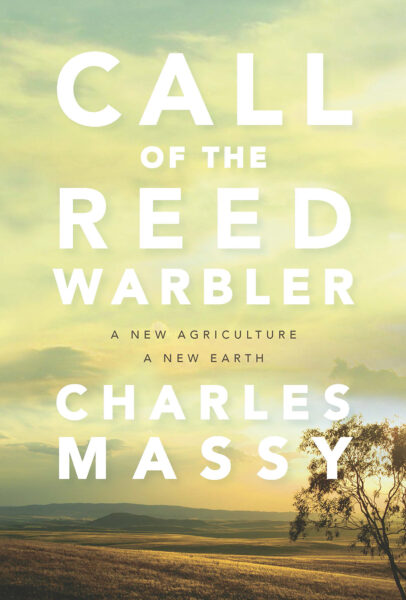How to Distinguish Permaculture from Natural Farming
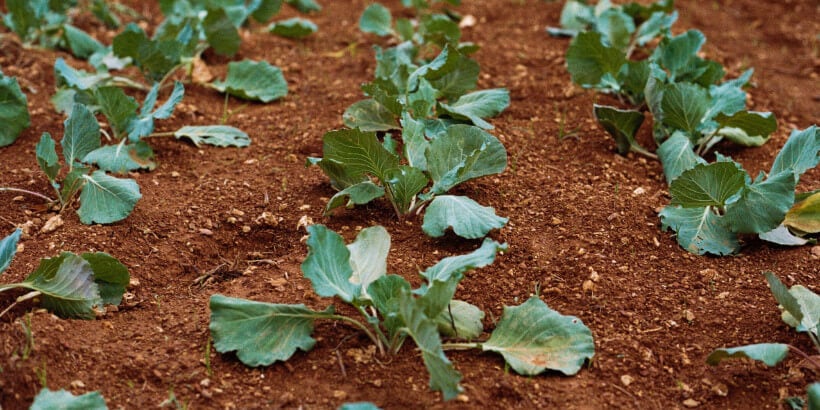
Just what are the differences between permaculture and natural farming? How are they connected, and where do they diverge in philosophy and principle?
Those questions are answered in One-Straw Revolutionary, a book that delves into the philosophy and work of Japanese farmer and philosopher Masanobu Fukuoka. In this passage, author Larry Korn compares and contrasts two important approaches to regenerative agriculture—permaculture and natural farming. Additional passages in the book compare natural farming to Indigenous farming, Japanese agriculture, and organic agriculture. Korn, who studied with Mr. Fukuoka and helped get his books published in the United States, offers these comparisons to show what natural farming is, and what it isn’t.
The following excerpt is from One-Straw Revolutionary by Larry Korn. It has been adapted for the web.
Permaculture has several characteristics that distinguish it from basic organic agriculture. It stresses the interconnectedness of life, is primarily a no-till system, emphasizes tree crops and perennial plants, and integrates the production of food and shelter with the social, economic, and political aspects of society. In many ways it does represent an improvement on basic organic techniques. But when carefully analyzed it becomes clear that permaculture, too, is a product of our modern way of thinking and therefore does not represent a clean break from other forms of modern farming.
The design process begins with careful observation of the patterns and interrelationships in nature. Then, in a process sometimes referred to as bio-mimicry, the designer imitates those patterns in the design. The practice of “observing nature,” however, presupposes an observer and something that is being observed. The separation from nature is built into the process from the beginning, and what is produced is the designer’s impression of nature.
The next step in the design process is an analysis of the elements and functions. Each element—say, a pear tree, chicken, or building—is examined and cataloged according to what its needs are and what it will provide to the other elements. This is essentially what science does. Nature, which is an indivisible whole, is split into individual parts, is analyzed, and then an attempt is made to put it back together. The reconstructed “whole” becomes a human invention, a simulation.
Ultimately, after all the information is collected and evaluated, the final design is produced. The designer is the creator and eventually the manager. Although the inspiration originally came from observing nature, the design is the work of the human intellect. The designer is firmly in control. I emphasized that word because it is perhaps the single most defining characteristic of modern culture.
So permaculture is based on the commonly shared beliefs and values of modern culture. It accepts people’s alienation from nature without objection, or perhaps without noticing; analyzes the whole as bits and pieces; then tries to fit them together again. It relies on the human intellect every step of the way. There are many wonderful things about human consciousness, but it can never understand a reality that is inherently unknowable. The permaculture saying I quoted earlier, that “the possibilities in a permaculture design are limited only by the imagination of the designer,” is meant to imply that the possibilities are limitless, but it also reveals a prideful overconfidence in human abilities. Why would anyone want to limit the possibilities to something as narrow and imperfect as the human mind?
Relying on the intellect moves permaculture outside the realm of natural farming. Most permaculturists, for example, woul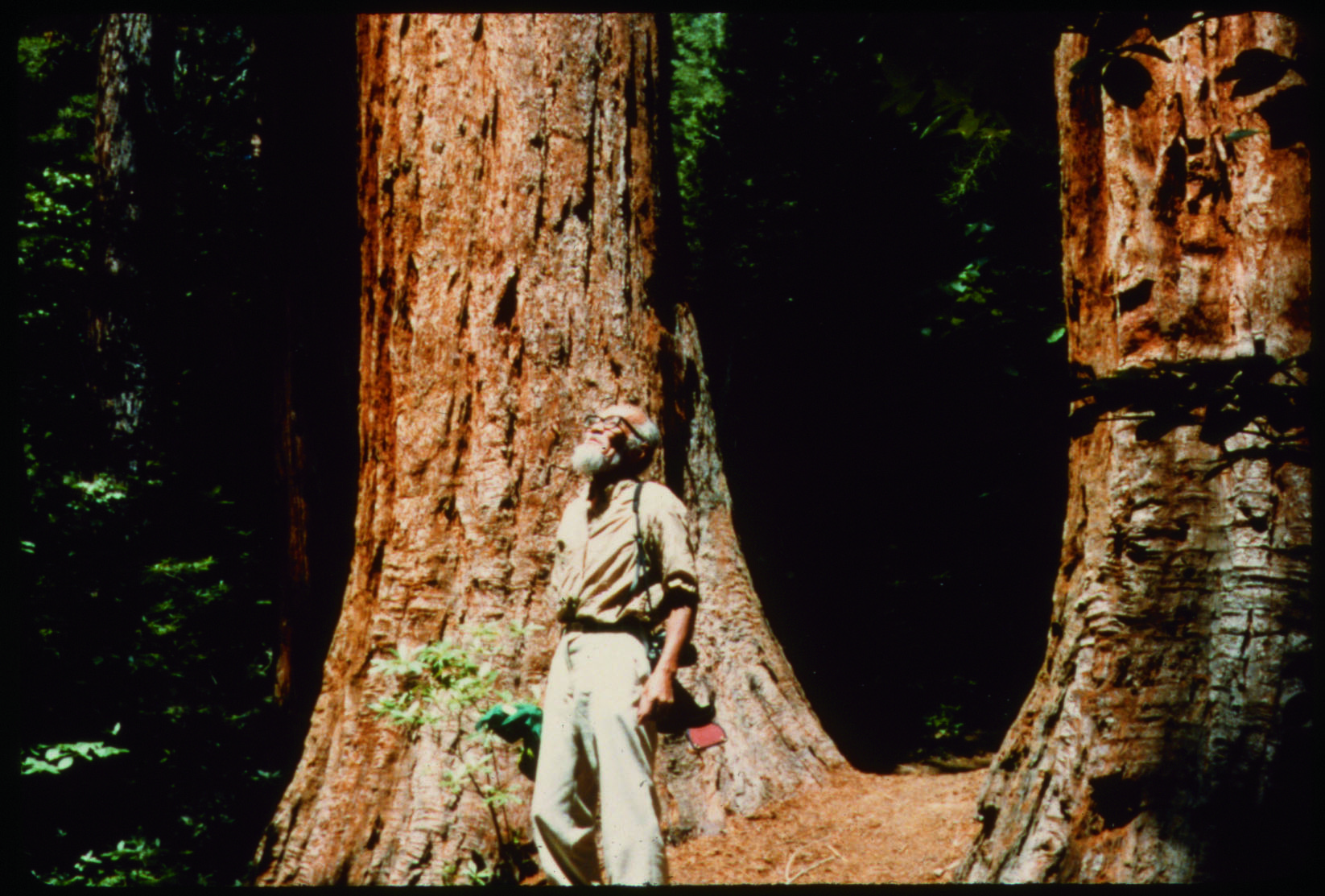 d not object to spraying compost tea on their plants or using exotic soil amendments if they made the crop grow faster and created a higher yield. Using ultraviolet grow lamps is fine as long as they are powered by solar panels or a pedal-powered generator. They visit a natural pond ecosystem in a forest meadow and decide to re-create something like it in their design. The result is a high-tech aquaponics system using PVC pipes, pumps, bubblers, solar collectors, and a digital timer. It is not at all like what the designers first observed, or anything like what you would ever see on a stroll through the woods.
d not object to spraying compost tea on their plants or using exotic soil amendments if they made the crop grow faster and created a higher yield. Using ultraviolet grow lamps is fine as long as they are powered by solar panels or a pedal-powered generator. They visit a natural pond ecosystem in a forest meadow and decide to re-create something like it in their design. The result is a high-tech aquaponics system using PVC pipes, pumps, bubblers, solar collectors, and a digital timer. It is not at all like what the designers first observed, or anything like what you would ever see on a stroll through the woods.
Permaculture also relies a great deal on information and scholarly research. The assumption is that if we gather enough information and analyze it with the aid of basic design principles we will eventually be able to figure out the best thing to do. David Holmgren, the co-founder of permaculture, explains, “Traditional agriculture was labour intensive, industrial agriculture is energy intensive, and permaculture-designed systems are information and design intensive.”
Some advocates would like to see permaculture include more spirituality in its curriculum. Others believe that only provable, observable science should be allowed, and that “flaky metaphysics” should be purged. Mollison himself holds this position. In his book Travels in Dreams, Mollison writes, “As I have often been accused of lacking that set of credulity, mystification, modern myth and hogwash that passes today for New Age spirituality, I cheerfully plead guilty . . . permaculture is not biodynamics, nor does it deal in fairies, divas, elves, after-life apparitions or phenomena not verifiable by every person from their own experience, or making their own experiments.”
The other camp believes there is more to the world than observable phenomena, that permaculture does not expressly forbid combining it with other disciplines, and that practices such as yoga, shamanism, and astrology have all passed scientific scrutiny. I was at one course where the instructor discussed his relationship with the fairies he had encountered in his garden and elsewhere. When asked if he actually believed in fairies, he said, “I do. Whether they are real or not . . . who knows? All I know is that they are real to me. They have made my life richer and more enjoyable, and have allowed me to practice permaculture more effectively than I would have been able to do otherwise.”
Some followers believe that permaculture can change the direction of modern society by somehow subverting the mainstream toward a healthier path, but I am skeptical that any segment of our society can manage to do that when they adopt the same core assumptions as the culture they are hoping to change. Eventually they will be reintegrated into the mainstream because people will revert to their familiar ways of thinking and acting that were ingrained since infancy.
When permaculture first came to the United States it was portrayed as a decentralized, grassroots movement. It had an egalitarian, tribal feel that was quite appealing. Today, however, the trend is toward a more structured organization with a central “institute” and a panel of experts to regulate tighter standards for curricula and certification. This effort is largely promoted by those who think that working within universities, government agencies, and other mainstream organizations will allow them to reach a larger audience. They believe that if permaculture had a more professional feel it would make them more acceptable in the eyes of those institutions. It is actually the first step toward becoming those institutions. A more structured organization leads to more centralized control, and with that comes the inevitable struggle to gain and maintain the upper hand. All permaculture needs to do to avoid this is to stay true to its egalitarian, decentralized roots. That means building strong, resilient, local cooperative communities outside the stifling influence of orthodoxy.
Although I have been pointing out what I consider to be shortcomings in the permaculture approach, I am not saying that permaculture has not had a positive influence. It has. Millions of trees have been planted over the past forty years that would not have been planted otherwise. Skills like seed collecting, food preservation, natural architecture and building, growing and using medicinal plants, foraging for wild plants, and how to use appropriate technology effectively have been revived, helping to conserve valuable knowledge and resources. Cooperative permaculture communities have grown up all over the world, providing an entryway for many people to come in contact with the natural world perhaps for the first time. But I believe it should be seen as just that, an entryway, not an end in itself. Ultimately, permaculture, too, must be transcended in favor of a broader vision that holds serving nature as its highest priority. If nature is the perfect model, why not let nature do the design?
Recommended Reads
Agroforestry Versus Permaculture: Which Approach to Use for a Community Food Forest
Recent Articles
With the right strategies and practices, composting on a small farm is surprisingly easy and inexpensive. Just follow these steps for making compost, and your farm will be thriving in no time! The following excerpt is from The Lean Farm Guide to Growing Vegetables by Ben Hartman. It has been adapted for the web. (All photographs by Ben…
Read MoreGarlic mustard: while known as “invasive,” this plant can be consumed in its entirety and has great nutritional value. Plus, the garlic-flavor is a perfect addition to any recipe that calls for mustard! The following are excerpts from Beyond the War on Invasive Species by Tao Orion and The Wild Wisdom of Weeds by Katrina…
Read MoreEveryone loves a refreshing, fermented, nutritious drink…even your garden! Take your fermentation skills out of the kitchen and into the garden by brewing fermented plant juice. The following is an excerpt from The Regenerative Grower’s Guide to Garden Amendments by Nigel Palmer. It has been adapted for the web. How to Make Fermented Plant Juice Fermented…
Read MoreWant to see your crops thrive this upcoming growing season? The key is in soil fertility and health. Spend time maintaining your soil’s health to guarantee bigger and better crops come harvest time! The following is an excerpt from No-Till Intensive Vegetable Culture by Bryan O’Hara. It has been adapted for the web. What Is Soil Fertility?…
Read MoreMany know the effects of catnip on our feline friends, but few realize that catnip has medicinal effects for humans. From stomach aches to reducing fevers, catnip is a versatile herb with many benefits. The next time you grow this plant for your cat you may end up taking a few cuttings for yourself! The…
Read More

